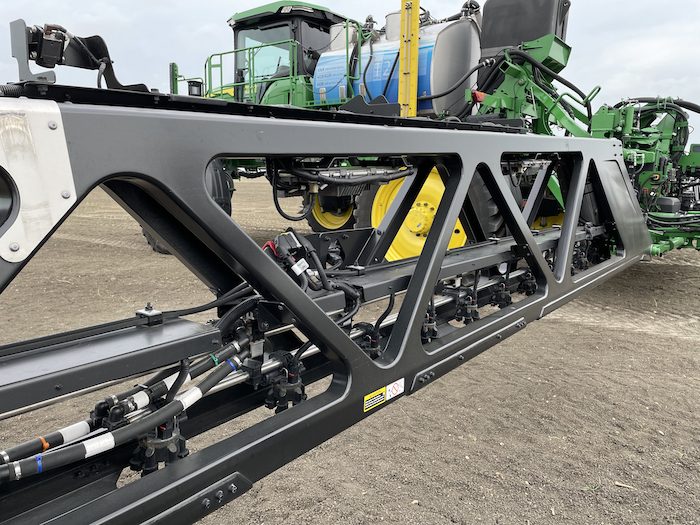CropLife/Purdue University recently published some results from its 2023 Precision Ag Survey, the longest-running continuous study of precision farming adoption. Survey respondents included 87 ag retailer input suppliers, mostly from the Midwest. The results reported are from dealers that primarily work with field crops such as corn, soybeans, wheat, rice, cotton, milo, sugar beets and forages.
89% of total respondents use autoguidance on their application equipment, a 4-point increase from 2022. 82% use GPS-enabled sprayer boom/nozzle controllers, up 12 points from 2022. Also, for the first time in the history of the survey, more than half (55%) of total respondents are using GPS fleet management to track the locations of vehicles. 53% use telemetry to exchange information and 41% use sprayer turn compensation.
The survey also tracked what dealers expect to offer in 3 years. While 57% of respondents currently offer UAV or drone technology, 75% project they’ll offer both by 2026. Satellite/aerial imagery is also projected to make a sizable jump from 55% in 2023 to 67% by 2026. Other 2026 projected offerings include 87% for grid/zone soil sampling, 77% for yield monitor/other data analysis, 32% for soil electrical conductivity (EC) mapping, 29% for chlorophyll/greenness sensors, 16% for robotic crop scouting and 10% for robotic weeding.
43% of survey respondents plan on offering variable rate technology (VRT) pesticide application by 2026, up 13 points from 2023. Other 2026 projected offerings include 87% for VRT fertilizer application, 70% for VRT lime application, 69% for VRT seeding projections and 54% for crop inputs applied with a UAV/drone.
Retailers estimate that only 10% of producers in their market area are using UAV/drone imagery, down 7 points from 2022. Satellite/aerial imagery also dropped from 31% in 2022 to 21% in 2023. Guidance/autosteer (77%) and planter row/section shutoffs (54%) adoption rates eclipsed previous highs. Retailers estimate that 72% of producers in their area use yield monitors, 64% use sprayer section controllers and 15% use soil EC mapping.
Retailers estimate only 43% of producers use VRT lime application, a 9-point drop from 2022. VRT fertilizer application has dropped from 49% in 2022 to 43% in 2023, variable down pressure on planter has dropped from 41% to 38%, variable hybrid placement has dropped from 14% to 12% and VRT pesticide application has dropped from 9% to 6%. The use of VRT seeding remains unchanged from 2022 at 22%.
A full report from the 2023 survey is scheduled to be released later this summer.



![[Technology Corner] Discussing AI’s Potential Impact on Service & Support](https://www.precisionfarmingdealer.com/ext/resources/2025/04/11/Discussing-AIs-Potential-Impact-on-Service--Support.png?height=290&t=1744385717&width=400)


